
Silence hums in your ears, broken only by wind through pine and the steady rhythm of your breath. No fences. No fees. Just you and the wild, wide-open unknown.
Wonder isn’t reserved for postcards—it lives in forgotten trails and sky-splitting ridges, where adventure doesn’t come with a price tag. This is for those chasing moments, not markers. Now more than ever, escaping the noise means something real. With crowds rising and access tightening, finding free solitude in national parks isn’t just rare—it’s revolutionary.
What follows is your map to 12 backcountry secrets waiting to transform you.
1. Yosemite National Park – Clouds Rest Backcountry

High above the Yosemite Valley, Clouds Rest floats like a dream in the sky. The trail up to this ethereal ridge slices through dense pine forests and alpine meadows, finally revealing a jaw-dropping spine of granite perched at 9,926 feet. Looking down from the summit, you’re gifted with a panoramic sweep of Half Dome, Tenaya Canyon, and endless Sierra peaks that stretch far into the horizon. Nights here are silent but for the rustle of wind and the distant echo of owls. The stars? Ridiculous.
I remember bivouacking just off the ridgeline, watching the golden afterglow of the setting sun brush across Yosemite’s iconic cliffs. A lone hiker passed by, smiled, and whispered, “You picked the right night.” He was right. There’s something about Clouds Rest that feels like it belongs to another realm — one accessible only to those willing to carry their world on their back and walk into the silence.
Key Practical Information:
- Peak season: July–September; snow-free, clear skies, warm days/cool nights.
- Off-peak: May–June, October; snow patches, chilly temps, fewer crowds.
- Getting there: Park at Tenaya Lake or Sunrise Lakes trailheads; hike 6–7 miles in.
- Ideal duration: 2–3 days for a relaxed pace and summit at sunrise or sunset.
- Must-try experiences: Take a cold plunge in Tenaya Lake; watch the alpenglow on Half Dome.
- Budget tips: Free wilderness permit required (book early); no camp fees.
- Cultural etiquette: Pack out all trash, bury waste, and respect wildlife corridors.
- Photography tips: Sunset from summit; dawn light over Yosemite Valley; long-exposure starscapes.
2. Grand Teton National Park – Death Canyon Shelf
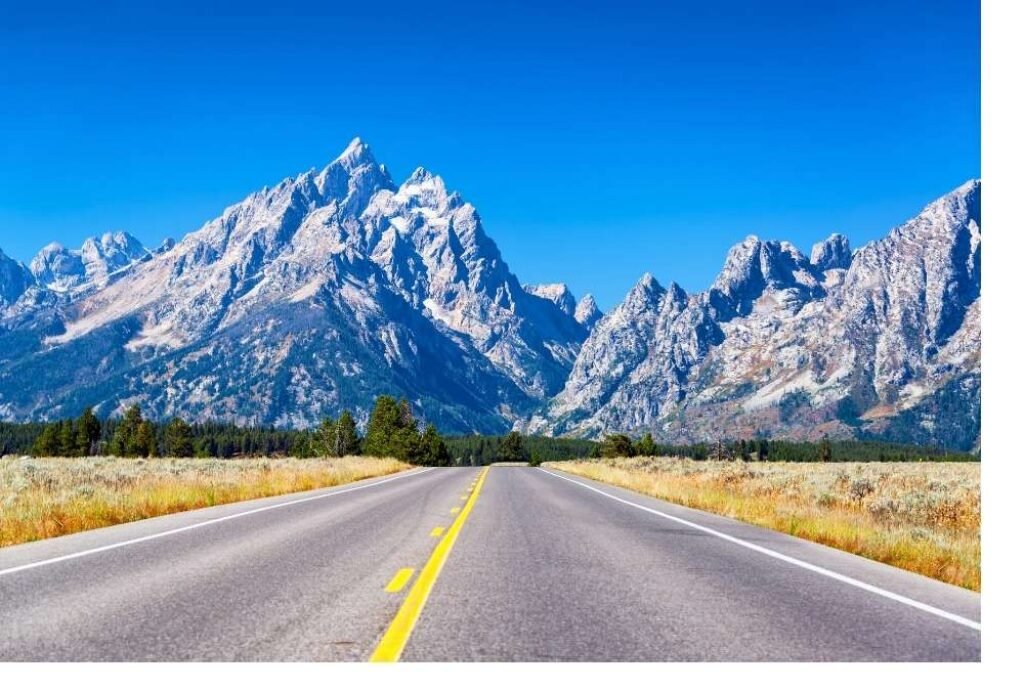
Despite its foreboding name, Death Canyon Shelf is pure backcountry bliss. The shelf itself is a vast, flat terrace clinging to the high cliffs of the Tetons, with panoramic views that are almost surreal. Here, marmots skitter across talus slopes and pikas whistle warnings as you hike past. Campsites hug the edge of the cliff, giving you front-row seats to a tapestry of jagged spires and alpine light.
One evening, clouds drifted low and slow along the canyon wall, and as the sun dipped, they caught fire in a swirl of pink and gold. I was sipping tea, boots off, legs dangling over the edge, and for a moment, time didn’t exist. This is the kind of spot that redefines your relationship with wildness — and with silence.
Key Practical Information:
- Peak season: July–early September; snow-free trails, wildflowers, crisp air.
- Off-peak: June or mid-September; more solitude, possible snowfields.
- Getting there: Start from Death Canyon Trailhead; hike via Alaska Basin Trail (~10 mi in).
- Ideal duration: 3–4 days for exploring the shelf and surrounding canyons.
- Must-try experiences: Spotting moose near the trailhead; alpine sunset yoga (yes, really).
- Budget tips: Free backcountry permit required; no camping fees.
- Cultural etiquette: Stay on durable surfaces; Teton backcountry is sacred to Shoshone peoples.
- Photography tips: Shelf edge portraits; golden hour canyon shots; Milky Way over peaks.
3. Glacier National Park – Granite Park Chalet Zone
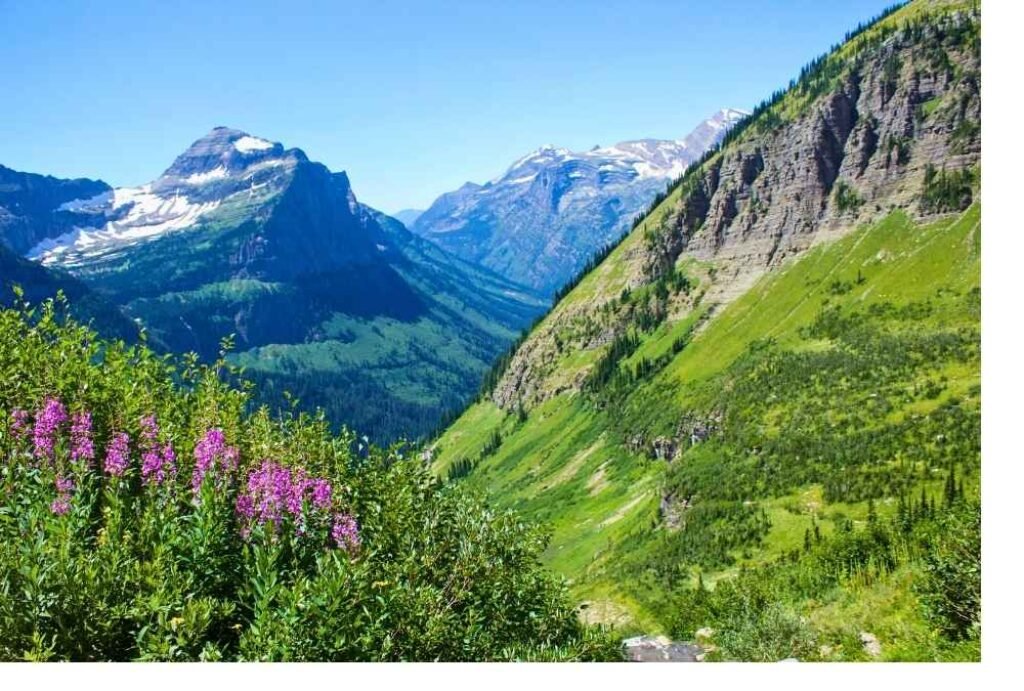
Granite Park Chalet is technically rustic lodging, but it also serves as a gateway to some of the most spectacular free dispersed camping in Glacier’s backcountry zone nearby. You’ll follow the famed Highline Trail, where cliffs and wildflowers abound, and maybe pass a bighorn sheep munching breakfast. Set up camp in the designated zones just beyond the chalet and wake up to alpenglow kissing the peaks of the Lewis Range.
When I stayed here, a thunderstorm rolled in across the valley, the kind that makes you feel like you’re watching ancient gods wage war. We hunkered down in the pines, our tent flapping, sharing stories and instant cocoa while lightning split the sky above the Garden Wall. The next morning, the world glistened — new, washed, and wild.
Key Practical Information:
- Peak season: Mid-July to mid-September; snow-free, bear activity, vivid sunsets.
- Off-peak: Early July or late September; snowfields remain, unpredictable weather.
- Getting there: Take the Highline Trail from Logan Pass (~7.6 miles); permit camping near chalet.
- Ideal duration: 2 nights minimum; allows time for day hikes to Grinnell Glacier or Swiftcurrent Lookout.
- Must-try experiences: Walk the Garden Wall; chat with chalet staff about trail lore.
- Budget tips: Chalet costs $, but surrounding camping is free with a permit.
- Cultural etiquette: Be bear aware — store food in bear boxes, carry spray.
- Photography tips: Garden Wall vistas; morning fog rolling in the valley; wildlife close-ups.
4. Sequoia & Kings Canyon – Rae Lakes Loop Wilderness

The Rae Lakes Loop is a legendary route, and for good reason: it winds past alpine lakes, granite cathedrals, and some of the oldest trees on Earth. Tucked deep in Kings Canyon’s backcountry, you’ll find several free dispersed campsites that reward your effort with turquoise water and crisp mountain air. Few things beat the thrill of dropping your pack beside a mirror-like lake, then plunging in before the sun sets behind the peaks.
One night, I camped on a small rise above the upper Rae Lake and woke to a surreal scene — fog hovering over the lake, still and silver. My boots frosted, breath visible, and the only sound was the distant rumble of a waterfall. I swear I saw trout ripple the surface, and for a few minutes, I forgot the rest of the world existed.
Key Practical Information:
- Peak season: July–September; clear trails, warm lakes, snow-free passes.
- Off-peak: Late June/early October; unpredictable snow, but dramatic light.
- Getting there: Begin at Roads End in Kings Canyon; 41-mile loop; permits needed.
- Ideal duration: 4–5 days; more if you want to linger by the lakes.
- Must-try experiences: Cold swim in Rae Lakes; watch the stars reflect in the water.
- Budget tips: Free wilderness permits, but quotas fill fast — reserve early.
- Cultural etiquette: Be especially Leave No Trace conscious — this is pristine alpine country.
- Photography tips: Reflection shots at golden hour; Glen Pass panoramas; astrophotography gold.
5. Olympic National Park – Enchanted Valley

They don’t call it the Valley of 10,000 Waterfalls for nothing. Enchanted Valley is where ancient rainforests meet towering cliffs, waterfalls cascade down mossy walls, and the only traffic is elk and black bears. A well-maintained but moderately long trail leads you to campsites beside the Quinault River, where fog-laced mornings and fern-strewn afternoons stretch into something like a fairy tale.
I’ll never forget the chorus of waterfalls that lulled me to sleep — no need for a sound machine when nature is this musical. A ranger once told me, “This place is more alive than most people realize.” He was right. You can feel it in the hush of moss underfoot and the steam that rises from morning tea as the mist burns off the river.
Key Practical Information:
- Peak season: May–September; rain possible anytime, but lush and green.
- Off-peak: October–April; quieter, wetter, slippery conditions.
- Getting there: Hike 13 miles in from Graves Creek Trailhead; wide and lush trail.
- Ideal duration: 2–3 nights; explore beyond the valley floor to Anderson Pass.
- Must-try experiences: Spotting Roosevelt elk; journaling under a dripping cedar.
- Budget tips: Free with backcountry permit; minimal gear rental needed.
- Cultural etiquette: The Quinault people view this valley as sacred — tread lightly.
- Photography tips: Waterfall slow-shutters; misty forests; wide-angle river shots.
6. Zion National Park – Kolob Canyons Wilderness
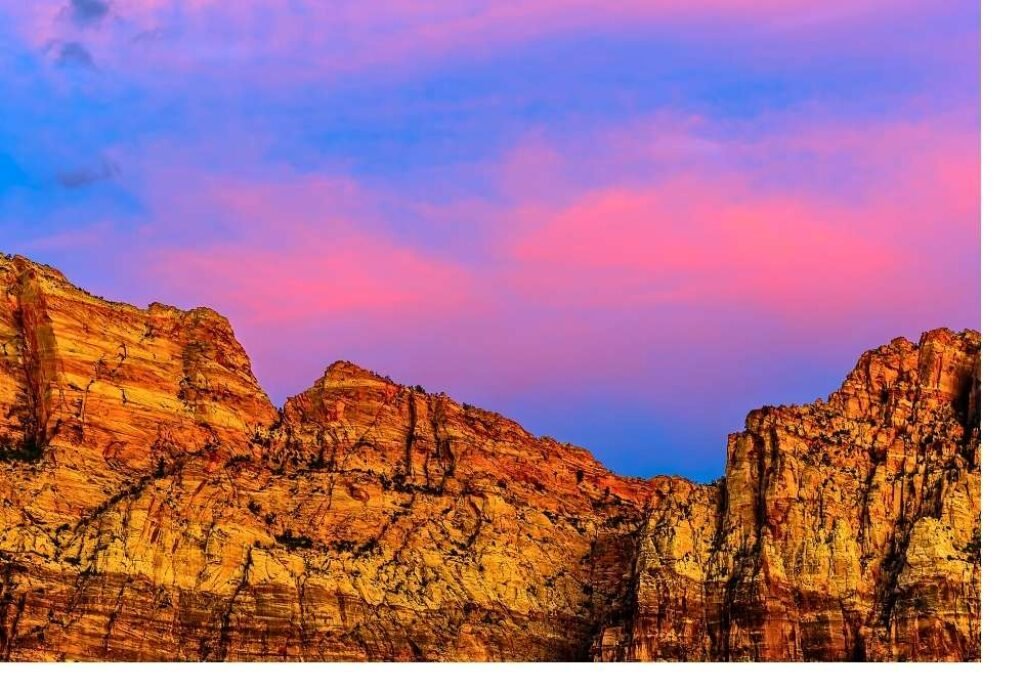
If Zion’s main canyon is the star-studded front row, Kolob Canyons is the hidden artist’s loft — raw, red, and reverently quiet. Tucked away in the park’s northwest corner, this slice of wilderness is where the sandstone breathes in silence and you can walk for miles without seeing another soul. The La Verkin Creek Trail leads to dispersed camping zones, and the walls here rise like ancient temples above you.
It was during a spring trip that I stumbled across a natural amphitheater bathed in golden light — a place so still I whispered my own thoughts. Later, a flash rainstorm transformed the cliffs into a chorus of cascading waterfalls, and I just stood there soaked and grinning. This place doesn’t ask to be conquered — it invites you to slow down and just be.
Key Practical Information:
- When to Go: Late spring and fall — cooler temps, dramatic light, fewer bugs.
- How to Get There: Enter via Kolob Canyons Visitor Center; 14-day permit zone.
- Best For: Solitude seekers, storm chasers, spiritual hikers.
- Avoid If: You crave classic Zion crowds or shuttle buses.
- Pro Tip: Camp near Kolob Arch for early morning solitude — it’s one of the world’s longest freestanding arches.
- Gear Hack: Bring trekking poles — sandy washes and riverbeds are deceptively tiring.
- Photos To Capture: Shadow play on red walls, rain curtains, golden hour arches.
7. North Cascades National Park – Sahale Glacier Camp
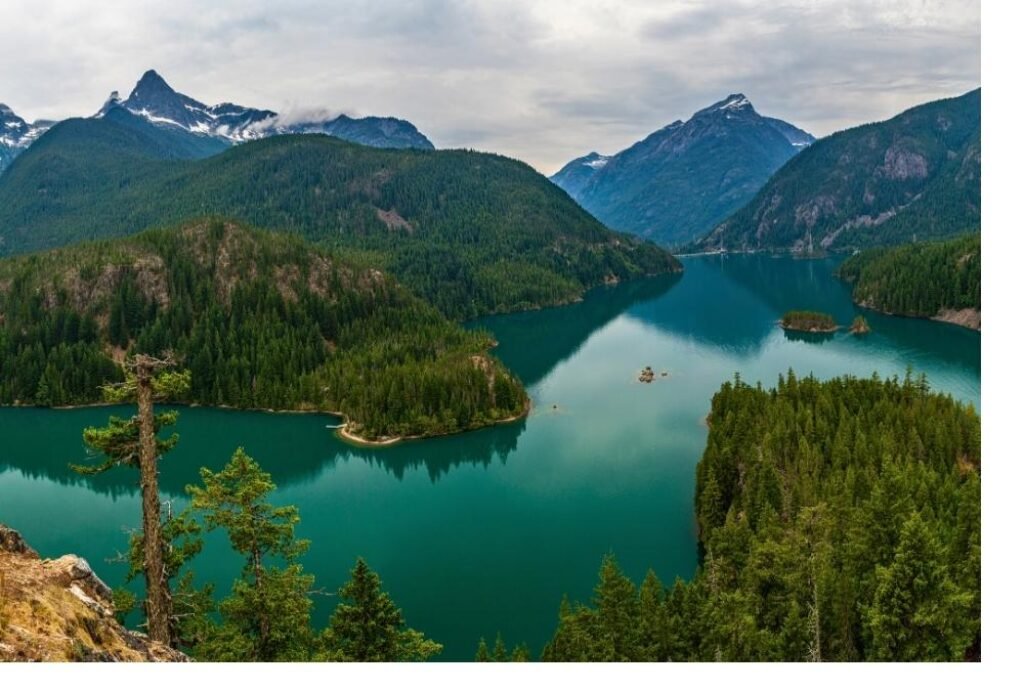
There are few places in the Lower 48 where you can pitch a tent above the clouds — Sahale Glacier Camp is one of them. Perched on a rocky ledge just below the glacier, this site feels like it belongs in the Himalayas. The trail to Sahale Arm climbs steeply past Cascade Pass, through fields of wildflowers and goat trails, before arriving at a stark and stunning alpine world.
On my visit, I arrived above the treeline just in time to watch the fogs roll through like waves in the valley below. A mountain goat watched me from a distance, unmoving, like a guardian. That night, I swear I saw five shooting stars in less than ten minutes. It felt less like camping and more like borrowing a seat in the sky.
Key Practical Information:
- Best Season: Mid-July to September (expect snow patches year-round)
- Access Route: Hike from Cascade Pass Trailhead; strenuous 6-mile ascent with switchbacks
- Campsite Vibe: Rugged, exposed, high-alpine drama; limited flat spots
- Permits: Required — competitive lottery, apply early
- Ideal Trip Length: 1–2 nights due to extreme exposure
- Local Tip: Bring a closed thermos — glacier winds cool food in minutes
- Top Shot: Sunset over Forbidden Peak; tent against a star-laced sky
8. Rocky Mountain National Park – Thunder Lake Basin

There’s something primeval about Thunder Lake. Maybe it’s the dark spruce forest that swallows the trail on your way in, or the thunderheads that tend to build like clockwork each afternoon. Tucked in the Wild Basin area of Rocky Mountain, the backcountry sites around Thunder Lake offer solitude without sacrificing drama — think mirror-still lakes framed by jagged ridgelines and the occasional elk bugle echoing through the air.
I once watched a lightning storm roll across the peaks from the relative safety of a nearby ledge — it was like watching nature play a war drum. The next morning, the basin was ghostly quiet, the trail carpeted in dew. You’ll feel both small and strangely whole out here.
Key Practical Information:
- Most Magical Moment: Watching mist rise off the lake at sunrise while sipping instant coffee from a titanium cup
- How to Get There: Start at Wild Basin Trailhead. Hike ~6.5 miles in (moderate to strenuous)
- Best Time to Visit: Mid-July through September — thunderheads are common, but trails are clear
- Permit Info: Yes — free backcountry permit required in advance
- Who It’s For: Weather junkies, solo backpackers, off-grid dreamers
- Don’t Forget: A weatherproof tent — “Thunder Lake” isn’t named by accident
- Top Photography Moments: Stormy skies over Mount Alice, reflections in early morning light, elk near the trailhead
9. Great Smoky Mountains – Hazel Creek Area
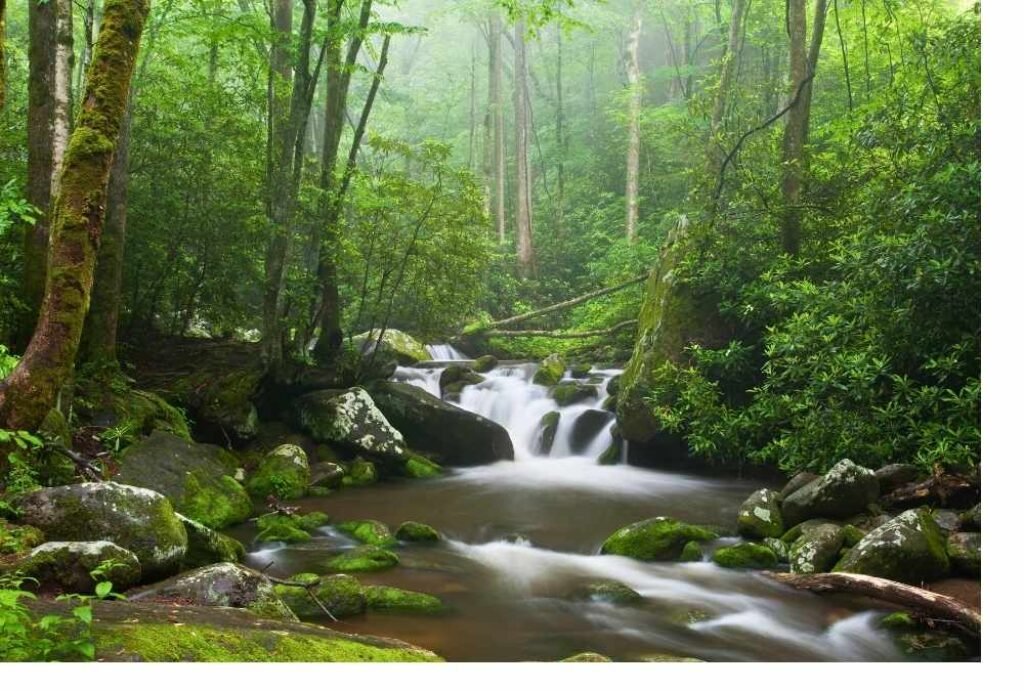
Cross a lake by boat, hike deep into bear country, and pitch your tent where old logging towns once stood — that’s Hazel Creek. This remote sector of the Smokies feels haunted in the best way, echoing with history and humming with life. The creeks here murmur under giant sycamores, and campsites are strung along trails once used by miners and moonshiners.
One autumn, I came across a cemetery tucked deep in the forest. The air was cool and still, and fallen leaves carpeted everything. A fox darted by, completely unbothered by my presence. There’s a depth here that makes you feel part of something older than yourself — something rooted and real.
Key Practical Information:
- Access: Cross Fontana Lake by boat (private or park service) to reach trailhead
- When to Go: October for fiery foliage, spring for wildflowers
- Where to Camp: #86 (Proctor), #84 (Bone Valley) — quiet and historic
- Unique Feature: Abandoned settlements, overgrown graveyards, rusty relics
- Bear Awareness: High activity — bear canisters mandatory
- Top Photos: Mist over creeks, golden leaf trails, mossy chimney ruins
10. Canyonlands National Park – The Maze District
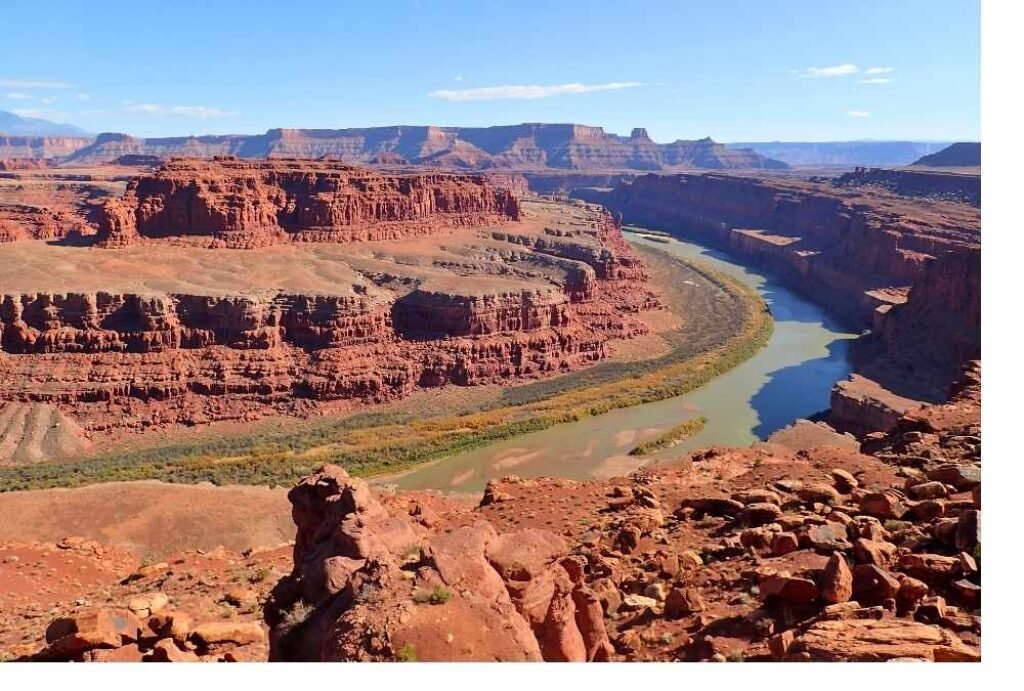
Forget roads. Forget phone signal. The Maze is not just remote — it’s a mental and physical puzzle, which is why so few people attempt it. But those who do are rewarded with slot canyons, surreal rock formations, and a silence so thick it feels alive. You’ll need 4WD to even approach it, and self-sufficiency is the only rule.
On a multi-day solo hike, I once lost track of time in a canyon that felt like the inside of a cathedral. My map made sense, but the land seemed to shift with the sun. Eventually, I climbed out just in time to see the Needles glowing in twilight. I was exhausted — and never more alive.
Key Practical Information:
- Navigation Needs: GPS, compass, paper map — no marked trails
- How to Reach: 4WD only; expect sand, rock shelves, and zero water resupply
- Best Seasons: Spring (March–May) or Fall (September–November); avoid summer heat
- Water Tip: Bring at least 1 gallon per person per day
- Camping Info: Designated primitive zones; free permit required
- Best Photo Moments: Druid Arch, Chocolate Drops, star trails in utter silence
- For Whom: Hardcore navigators, desert lovers, self-reliant minimalists
11. Capitol Reef National Park – Upper Muley Twist Canyon

This is the Utah you didn’t expect — remote, red, and impossibly twisted. The Upper Muley Twist route snakes through Capitol Reef’s lesser-known backcountry, winding past arches, slots, and massive fins. You can car camp at the end of the rough Burr Trail Road, then hike into something that feels like a Martian novel written by Edward Abbey.
During one trip, I stumbled upon a hidden alcove just before sunset — a place so still and vividly colored it felt animated. I sat for an hour, watching the light change the canyon walls from burnt orange to amethyst. Capitol Reef rewards the patient, the curious, and the quietly rebellious.
Key Practical Information:
- Best Season: Spring and fall for mild temps and glowing light
- Access: Burr Trail Road via Boulder or Notom; 4WD recommended
- Route Info: ~9-mile loop from Strike Valley Overlook parking
- Camping Type: Designated primitive sites or dispersed (permit required)
- Permit System: Free at visitor center or self-register at trailhead
- Photo Essentials: Peek-a-boo Arch, rim views, twisted fins at twilight
12. Joshua Tree National Park – Covington Flats
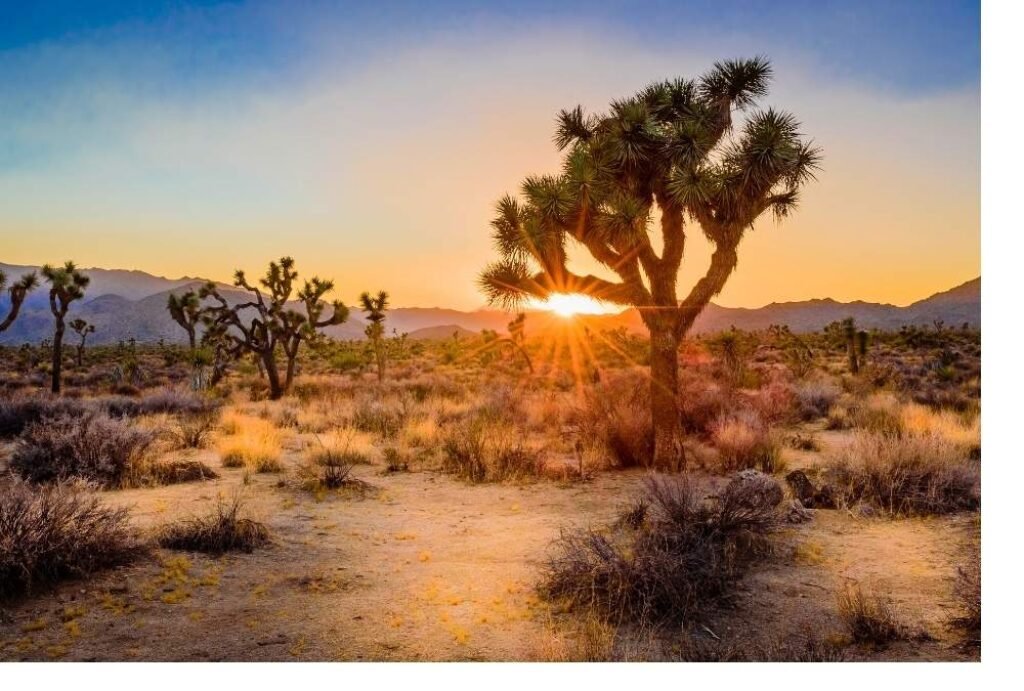
Most visitors don’t make it west of Black Rock, but Covington Flats is where the Mojave still whispers secrets. It’s a place of quiet ridgelines, ancient pinyon pines, and the park’s tallest Joshua trees. You’ll find primitive campsites scattered off dirt roads, many with panoramic views across the Coachella Valley. And at night? Pure velvet sky.
I camped here solo under a full moon, no tent, just a bivy and the hush of wind through dry branches. Somewhere in the distance, a coyote howled — not a sound of menace, but of belonging. This place isn’t flashy, but it sticks to your bones.
Key Practical Information:
- When to Visit: Late fall through spring; avoid summer due to heat
- How to Get There: Enter via Covington Flats Road from Yucca Valley
- Expectations: Dirt roads, no water, pure quiet
- Permits: Self-registration at trailhead; free dispersed camping allowed
- Photography Focus: Lone trees against pastel skies, desert silhouettes, moon shadows
- Overall Vibe: Minimalist desert solitude with celestial drama






